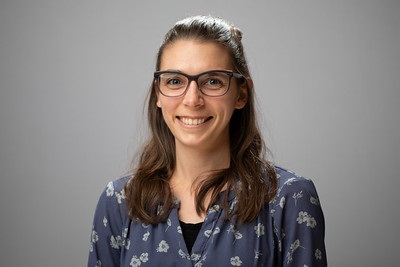Website
View Website
Brittney completed her B.S. and M.S. degrees in Animal Sciences at the University of Wisconsin-Madison. Throughout her graduate program, she has worked as a research technician, contributing to collaborative projects that have sparked diverse research interests. In her free time, she enjoys hiking, biking, and spending time with family and friends.
Osteochondrosis (OC) is an idiopathic developmental disorder that affects growth plates and articular surfaces in bones of growing children and animals. OC lesions appear as focal failures in endochondral ossification, a pivotal process where cartilage is replaced by bone in fetal and postnatal growth. OC lesions in the vertebrae can cause abnormal spinal curvatures, such as scoliosis or kyphosis, while those in the long bones lead to joint pain, abnormal growth, and early-stage osteoarthritis. These skeletal abnormalities significantly impair musculoskeletal function and diminish quality of life during critical stages of growth.
Although the etiology of OC lesions is multifactorial, vitamin D deficiencies have been associated with a higher incidence of these lesions, as observed in our lab’s hypovitaminosis D swine model. Vitamin D regulates Ca and P homeostasis by promoting intestinal absorption, renal reabsorption, and bone resorption, which impacts both bone modeling and remodeling. Vitamin D deficiency disrupts these functions, impairing cartilage development and ossification, which contributes to the formation of OC lesions. My research is aimed at understanding the cellular mechanisms mediated by vitamin D that regulate bone development. The main focus of my PhD research is the early detection of lesions and the development of dietary strategies to prevent or promote the regression of OC lesions.
Some of our collaborative projects with a pediatric orthopedic surgeon involve surgical procedures to modulate the growth of vertebrae (corrective tethering of kyphotic spines), distal femurs (correct angular deformities), and pelvic bones (guide angular orientation of of the acetabulum in cerebral palsy). As my career research focus is to understand the cellular mechanisms mediated by vitamin D that regulate bone development, these and other collaborative projects have broadened my perspective on the diverse physiological pathways influencing skeletal development.

